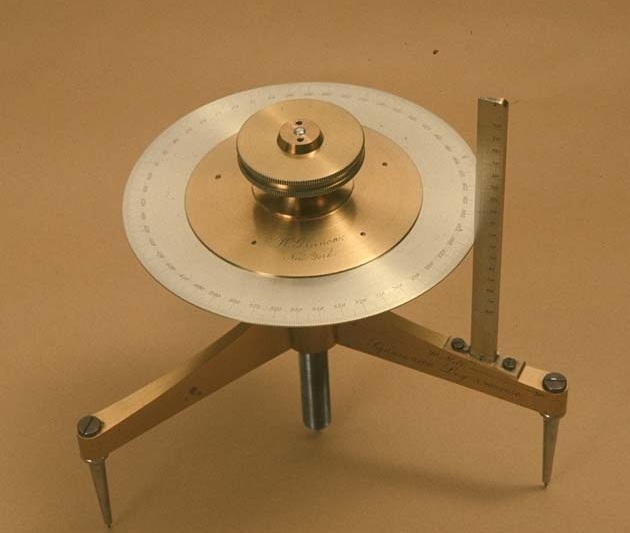- About MAA
- Membership
- MAA Publications
- Periodicals
- Blogs
- MAA Book Series
- MAA Press (an imprint of the AMS)
- MAA Notes
- MAA Reviews
- Mathematical Communication
- Information for Libraries
- Author Resources
- Advertise with MAA
- Meetings
- Competitions
- Programs
- Communities
- MAA Sections
- SIGMAA
- MAA Connect
- Students
- MAA Awards
- Awards Booklets
- Writing Awards
- Teaching Awards
- Service Awards
- Research Awards
- Lecture Awards
- Putnam Competition Individual and Team Winners
- D. E. Shaw Group AMC 8 Awards & Certificates
- Maryam Mirzakhani AMC 10 A Awards & Certificates
- Two Sigma AMC 10 B Awards & Certificates
- Jane Street AMC 12 A Awards & Certificates
- Akamai AMC 12 B Awards & Certificates
- High School Teachers
- News
You are here
Mathematical Treasure: Grunow Spherometer
Spherometers are micrometers used to measure the radius of curvature of such items as lenses or mirrors used in optometry or astronomy. They were – and still are by amateur astronomers – used during the grinding of lenses. The first spherometer was invented by French optician Robert-Aglaé Cauchoix in 1810. Spherometers can measure positive or negative curvature, depending on the convexity of the surface. They are small devices, usually about 10 to 12 cm in height.

Grunow Spherometer, ca 1860, Smithsonian Institution negative number 75-2953.
The spherometer shown above was produced by instrument makers William and Julius Grunow in the 1860s, after they emigrated from the German lands to New York City. The instrument was donated to the Smithsonian's National Museum of American History (NMAH) in 1958 by the Department of Physics and Chemistry at the United States Military Academy at West Point, New York.
The complete collection of eight spherometers at NMAH can be viewed at https://www.si.edu/spotlight/spherometers.
Amy Shell-Gellasch (Montgomery College), "Mathematical Treasure: Grunow Spherometer," Convergence (April 2015)




